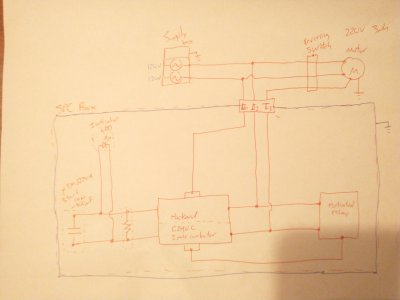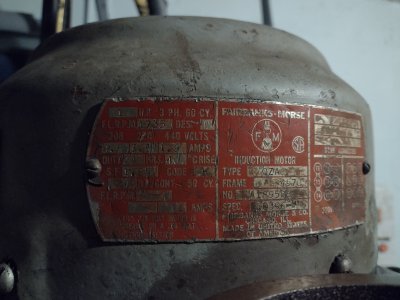- Joined
- Dec 23, 2022
- Messages
- 10
Thanks for all the input, all very good points! So I checked the resistance between each phase (at the switch) and got 7ohms between them (not sure what it's suppose to be but they were all the same). I also checked the resistance between each phase and ground and all were open circuits, so I'm assuming I didn't damage the motor enough to short any windings.
Based on everyone's feedback, since I already have the VFD (currently running my old Hoefer drill press) I think I will hook it back up to the Bridgeport and see how the motor runs. I think this will prove if the motor is ok and if it's a motor or SPC issue. Attached is a drawing of the SPC wiring (including internals based on looking inside, I have since added another capacitor per the manufacturers suggestion) and pictures of the motor and switch box.
I'm out of town till Thursday but I'll try the VFD when I get back and give an update. I've read through many VFD posts but are there any extra safety precautions I need to take with wiring it? I have the basics like properly sized breaker and wiring, common ground point, VFD in an enclosure, and only using the VFD to control on/off.
Based on everyone's feedback, since I already have the VFD (currently running my old Hoefer drill press) I think I will hook it back up to the Bridgeport and see how the motor runs. I think this will prove if the motor is ok and if it's a motor or SPC issue. Attached is a drawing of the SPC wiring (including internals based on looking inside, I have since added another capacitor per the manufacturers suggestion) and pictures of the motor and switch box.
I'm out of town till Thursday but I'll try the VFD when I get back and give an update. I've read through many VFD posts but are there any extra safety precautions I need to take with wiring it? I have the basics like properly sized breaker and wiring, common ground point, VFD in an enclosure, and only using the VFD to control on/off.



